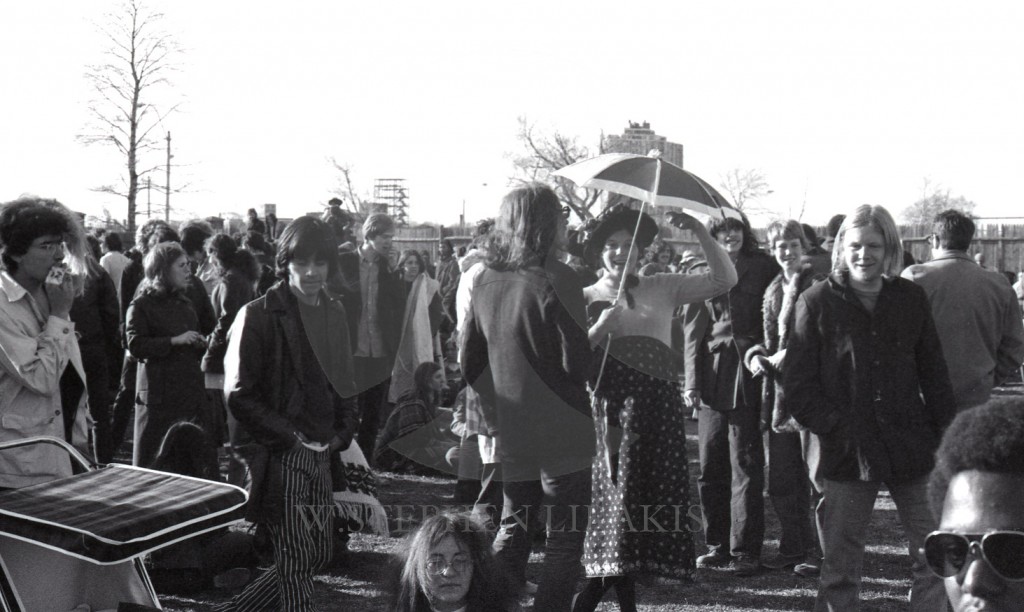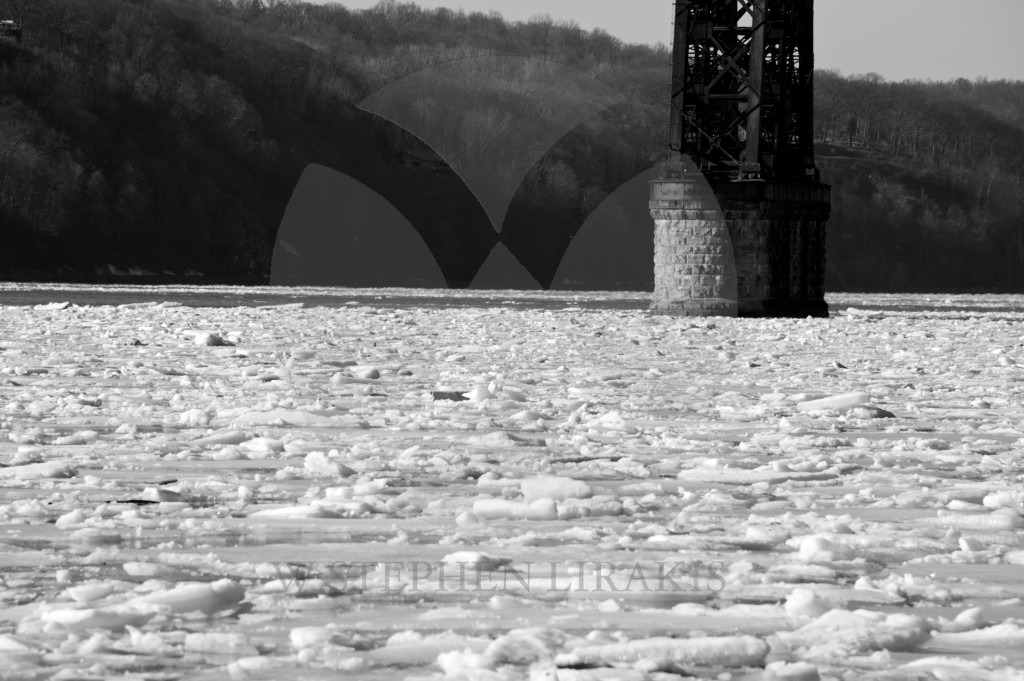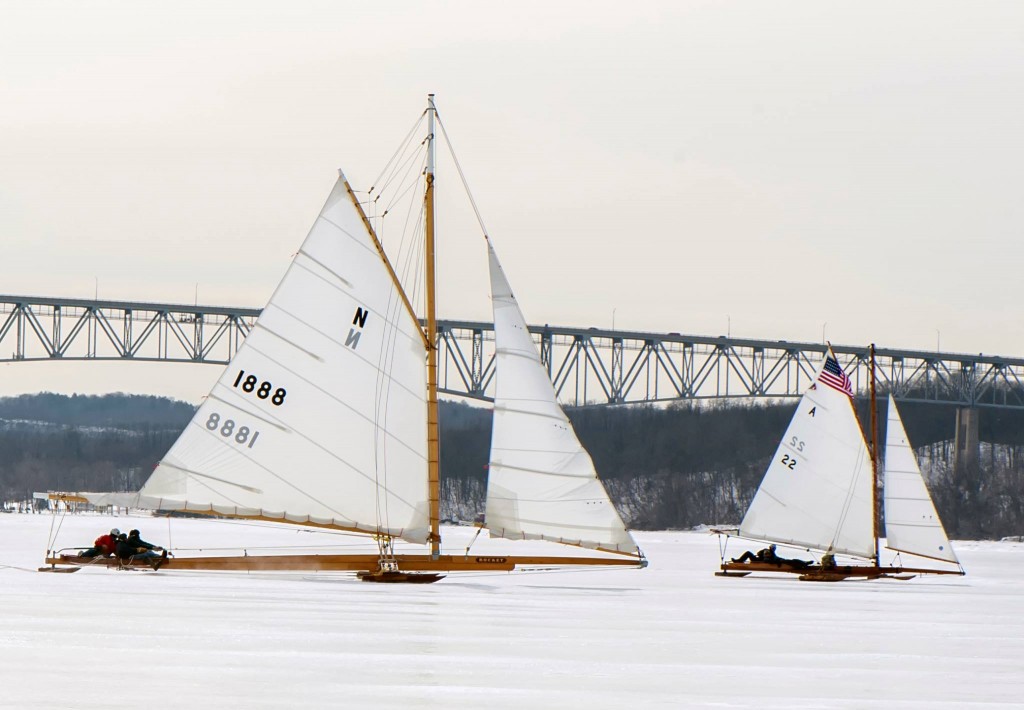This is in response to those who asked:”Who are you?” It is a least a dimension.Boats have always been a part of my life. Naturally interwoven with the story of Newport.
Category: intercolleigate sailing
E SCOW BLUE CHIP
EARTH DAY 1970
HUDSON RIVER ICE
RULE 55
|
FREE INSTALLATION OF NORTH SAILS STOP TABS North Sails introduced STOP TABS at the beginning of this year to help sailors comply with ISAF Rule 55 (a competitor may not intentionally throw trash in the water) by offering an alternative to rubber bands or wool ties to band your downwind sails. Through April 22 (Earth Day) we are offering free STOP TABS installation for the first five sailors at each North Sails location in North America. We’ll also send you a free North hat for helping save the environment! Make your appointment today: http://goo.gl/ER5CnR Editor’s Note: The 2013-2016 edition of The Racing Rules of Sailing includes Rule 55 (Trash Disposal), which states that: “A competitor shall not intentionally put trash in the water.”Click here for full explanation. |
ICE BOATING ON THE HUDSON
COLLEGE SAILING; NEW RULES

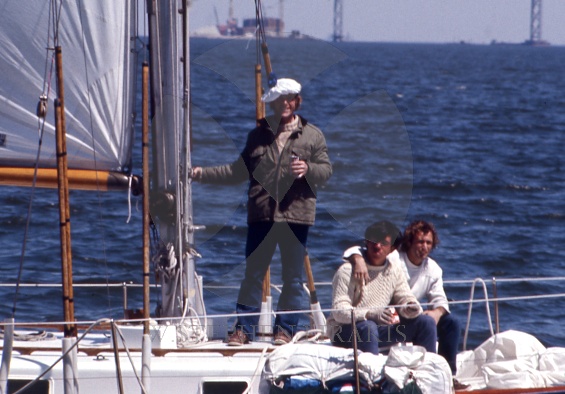

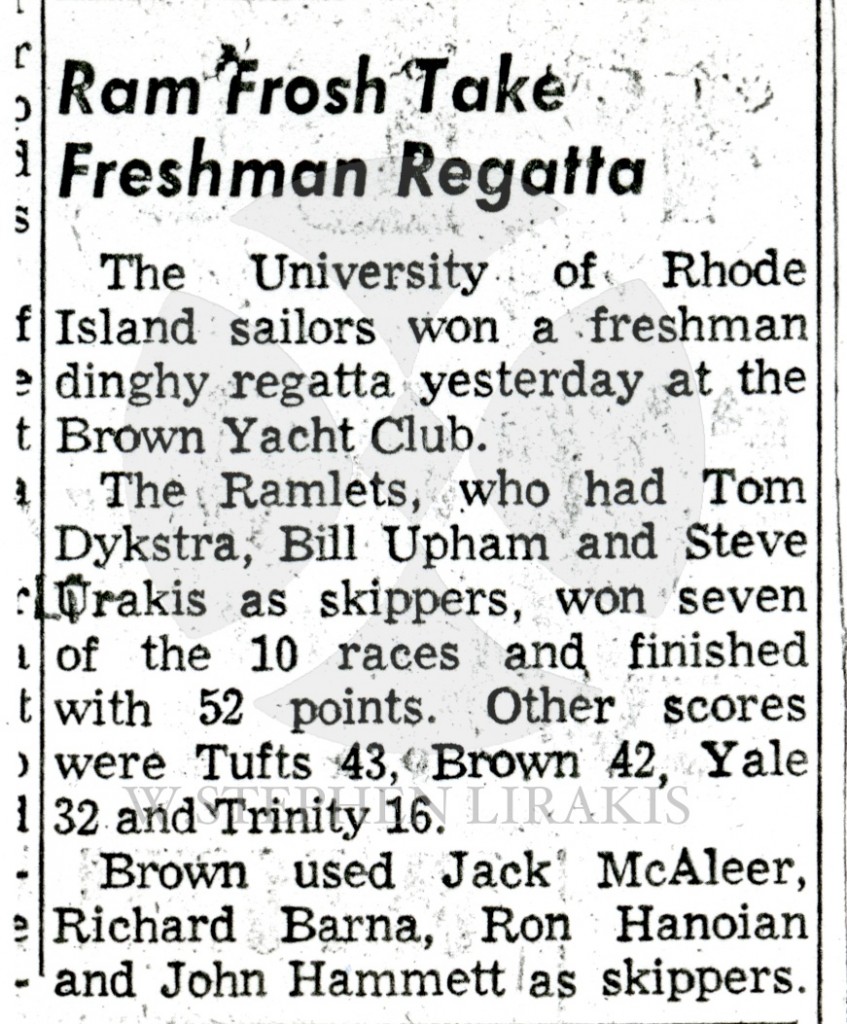
By Airwaves Writer Lydia Whiteford

Sail1Design welcomes your thoughts in our forum at the bottom of this article. Enjoy.
Earlier this winter, coaches from all over ICSA met in Utah to discuss the new year of college sailing. What resulted was a number of changes in the rules and regulations that apply to all the teams and events within ICSA, and it seems this year was the year of rather progressive and drastic changes. It is clear by the tenor of some of these changes that college sailing seems to be going the route of the NCAA, with stricter time restraints and even rules regarding sailor eligibility. This shift is admittedly extremely gradual, and will inevitably have its perks and downsides, but the most important thing for this season is adjusting to the rules that will apply right now. This article, therefore, is a response from me and others involved in college sailing to the most dramatic changes in the 2014 seasons.
The rule change that stood out to me the most at first is the new policy in which there will be a 10-race limit per day in college regattas. This means that after both divisions have sailed 10 races, no more races may be sailed on Saturday. By nature Sundays often have much fewer races because of the “no sail after” time, which is now 3 pm for most events. At first, this new rule seems like a bit of a hindrance. After all, the ultimate goal of any regatta is to get as many races as there are teams, because the more races there are the fairer the results become. But, upon further consideration, I think that this rule will provide a lot of benefits to sailors in certain venues. Everyone has sailed that regatta: 2 fleets of boats so breaks are minimized, or maybe even rotations on the water so you never get a break. When they do bring you in for “lunch”, you have just about enough time to viciously struggle out of your dry-suit and dash to the bathroom before they are calling for your division to get back on the water, where you will likely keep sailing until after sunset. These regattas, while noteworthy because they usually accomplish the desired number of races, often leave the sailors fatigued and dazed beyond recall. Your coach will ask you about an instance in the race and you find yourself drawing a blank because the entire day has blended into an endless loop of a W-4. With a 10- race limit, timing becomes more relaxed. If the sailors need a 30-minute break for lunch because the conditions are particularly brutal, they can take it because the race committee is only trying for 10 races, not 16. Also, this rule means that Saturdays will likely end earlier, giving college sailors (who are also college students) time to unwind and do work before they have to get up in the morning and sail all day again. This is particularly important for venues like Navy, which hold big inter-conference regattas that require most teams to travel far from home by van or even plane. These events absorb entire weekends, so having the spare time that the race limit can provide to do even a few regular student things will be of the upmost value.

The theme of some other proposed rules was increasing the safety precautions for the sailors. Concussions within college sailing have been increasing steadily over the years, and understandably so with a big pole made of metal hovering a couple of inches over your head whenever you are in a boat. One proposed solution was making helmets mandatory for all sailors; but this did not pass. The cost per school would be very high, and it did not seem like the most reasonable solution to the voters (and, more likely, all of the sailors who refused to wear helmets.) Some more experimental methods have been proposed, and have started to be tested. For example, Fran Charles (head coach at MIT) has proposed that all booms be made of carbon fiber, so as to reduce the weight of the boom and therefore the risk of serious head injury. All of the FJ’s at MIT already have carbon fiber booms, and they seem to sail as well as the normal collegiate FJ’s. The only difference is that they do not have a track to feed the foot of the sail through, and so a clew strap is necessary. These often break, and so present a sort of nuisance to the sailors right now, but if this flaw gets perfected I think that the carbon fiber booms are an excellent solution to the safety problem. Harvard has gone another route; two of the boats in their fleet of FJ’s have booms that are about 6 inches taller than normal. The masts are also longer, so there is no change in the sail area, but this is still the more controversial method because it may have a more influential change in the way the boats sail. 8 other schools are following suit with this, and have been approved for use for these new masts. Only testing of the two methods over the season will tell which is more effective.
Overall, it seems that the committee is trying to change the dynamics of college sailing to better fit the health of the athletes that compete in it. “At the NEISA annual meeting it was encouraging to see how healthy the conference is,” says Peter Bailey, Brown University Junior and Undergraduate Vice President of NEISA, “the leaders are taking steps to make college sailing more safe and competitive.” The more the rules change to be mindful of the sailors, the more that college sailing will start drifting towards the standards of the NCAA. I think I speak for all of us when I say it will be extremely interesting to see how the sport will develop in the near future.
Here’s a LINK to the official ICSA Procedural Rules
FAST VIDEO
2013 Penalty Box Productions Reel from Penalty Box Productions on Vimeo.
I continue to be impressed with the possibilities modern video cameras and computers have allowed people to do.
FRESH WATER
People have been saying for years that water will become more expensive than oil; and more valuable. The signals have been here for a long time. Most of the population either chooses not to acknowledge the impending problem and are willing to “kick the can down the road” or truly ignorant of the problem.
Following the 1968 Transatlantic race, the longest I ever sailed; I returned home in late July and needed to find a summer job before returning to school. I did find a job, on a boat that could not keep help. It was a powerboat, 55 foot Chris Craft. The water tanks held over 500 gallons. On the weekends, tied to the dock I simply had the hose in the fill port turned on and could barely keep up with the consumption. It was the first shocking revelation of total disregard of water use. Remember I had just returned from 27 days at sea on a sailboat with a crew of 8 on which we used under 100 gallons of water.
check out : Peter McBride “Chasing Water”
Colorado River Drought Forces a Painful Reckoning for States

LAKE MEAD, Nev. — The sinuous Colorado River and its slew of man-made reservoirs from the Rockies to southern Arizona are being sapped by 14 years of drought nearly unrivaled in 1,250 years.
The once broad and blue river has in many places dwindled to a murky brown trickle. Reservoirs have shrunk to less than half their capacities, the canyon walls around them ringed with white mineral deposits where water once lapped. Seeking to stretch their allotments of the river, regional water agencies are recycling sewage effluent, offering rebates to tear up grass lawns and subsidizing less thirsty appliances from dishwashers to shower heads.
But many experts believe the current drought is only the harbinger of a new, drier era in which the Colorado’s flow will be substantially and permanently diminished.
Faced with the shortage, federal authorities this year will for the first time decrease the amount of water that flows into Lake Mead, the nation’s largest reservoir, from Lake Powell 180 miles upstream. That will reduce even more the level of Lake Mead, a crucial source of water for cities from Las Vegas to Los Angeles and for millions of acres of farmland.

Reclamation officials say there is a 50-50 chance that by 2015, Lake Mead’s water will be rationed to states downstream. That, too, has never happened before.
“If Lake Mead goes below elevation 1,000” — 1,000 feet above sea level — “we lose any capacity to pump water to serve the municipal needs of seven in 10 people in the state of Nevada,” said John Entsminger, the senior deputy general manager of the Southern Nevada Water Authority.
Since 2008, Mr. Entsminger’s agency has been drilling an $817 million tunnel under Lake Mead — a third attempt to capture more water as two higher tunnels have become threatened by the lake’s falling level. In September, faced with the prospect that one of the tunnels could run dry before the third one was completed, the authority took emergency measures: still another tunnel, this one to stretch the life of the most threatened intake until construction of the third one is finished.
These new realities are forcing a profound reassessment of how the 1,450-mile Colorado, the Southwest’s only major river, can continue to slake the thirst of one of the nation’s fastest-growing regions. Agriculture, from California’s Imperial Valley to Wyoming’s cattle herds, soaks up about three-quarters of its water, and produces 15 percent of the nation’s food. But 40 million people also depend on the river and its tributaries, and their numbers are rising rapidly.
The labyrinthine rules by which the seven Colorado states share the river’s water are rife with potential points of conflict. And while some states have made huge strides in conserving water — and even reducing the amount they consume — they have yet to chart a united path through shortages that could last years or even decades.
“There is no planning for a continuation of the drought we’ve had,” said one expert on the Colorado’s woes, who asked not to be identified to preserve his relationship with state officials. “There’s always been within the current planning an embedded hope that somehow, things would return to something more like normal.”
Unfortunately, the Colorado during most of Lake Mead’s 78-year history was not normal at all.
Studies now show that the 20th century was one of the three wettest of the last 13 centuries in the Colorado basin. On average, the Colorado’s flow over that period was actually 15 percent lower than in the 1900s. And most experts agree that the basin will get even drier: A brace of global-warming studies concludes that rising temperatures will reduce the Colorado’s average flow after 2050 by five to 35 percent, even if rainfall remains the same — and most of those studies predict that rains will diminish.
Already, the drought is upending many of the assumptions on which water barons relied when they tamed the Colorado in the 1900s.
The Colorado basin states tried in the 1920s to stave off future fights over water by splitting it, 50-50, between the upper-basin states of Utah, New Mexico, Colorado and Wyoming and the lower-basin states of Arizona, Nevada and California.
In fact, the deal underestimated how much water the fast-growing lower-basin states would need. During most of the wet 20th century, however, the river usually produced more than enough water to offset any shortage.
Now, the gap between need and supply is becoming untenable.
Lake Mead currently stands about 1,106 feet above sea level, and is expected to drop 20 feet in 2014. A continued decline would introduce a new set of problems: At 1,075 feet, rationing begins; at 1,050 feet, a more drastic rationing regime kicks in, and the uppermost water intake for Las Vegas shuts down. At 1,025 feet, rationing grows more draconian; at 1,000 feet, a second Las Vegas intake runs dry.
Lake Powell is another story. There, a 100-foot drop would shut down generators that supply enough electricity to power 350,000 homes.
The federal Bureau of Reclamation’s 24-month forecasts of water levels at Powell and Mead do not contemplate such steep declines. But neither did they foresee the current drought.
“We can’t depend on history to project the future anymore,” Carly Jerla, a geological hydrologist and the reclamation bureau’s Colorado River expert, said in an interview. The drought could end tomorrow, she said — or it could drag on for seven more years.
That raises questions that the states are just beginning to sort out.
The river’s upper-basin states are worried that they might have to curb their consumption to meet their obligations downstream. But the thorniest problems are in the lower basin, where a thicket of political and legal deals has left Arizona holding the bag should the Colorado River continue to diminish.
In the 1960s, California’s legislators demanded first dibs on lower-basin water as a condition of supporting federal legislation to build the Central Arizona Project, a vast web of canals irrigating that state’s farms and cities. Should rationing begin in 2015, Arizona would sacrifice a comparatively small fraction of its Colorado River allotment, while California’s supply would remain intact.
Painful as that would be, though, it could get worse: Should Mead continue to fall, Arizona would lose more than half of its Colorado River water before California lost so much as a drop.
That would have a cascading effect. The Central Arizona Project would lose revenue it gets from selling water, which would raise the price of water to remaining customers, leading farmers to return to pumping groundwater for irrigation — exactly what the Central Arizona Project was supposed to prevent.
“By going back to the pumps, you’ll have made the decision that agriculture will no longer be an industry in central Arizona,” David Modeer, the project’s general manager, said in an interview.
Even Californians doubt Arizona would stand for that, but no successor to the 1960s agreement is in place. And California has a vital interest in holding on to its full allotment of water. The Southern California region using Colorado water is expected to add six million people to the existing 19 million in the next 45 years, and its other water source — the Sierra Nevada to the north — is suffering the same drought and climate problems as the Colorado basin.
“The basic blueprint of our plan calls for a reliable foundation that we then build upon, and that reliable foundation is the Colorado River and Northern California water,” said Jeffrey Kightlinger, the general manager of the Metropolitan Water District of Southern California. “To the extent we lose one of those supplies, I don’t know that there is enough technology and new supplies to replace them.”
There may be ways to live with a permanently drier Colorado, but none of them are easy. Finding more water is possible — San Diego is already building a desalination plant on the Pacific shore — but there are too few sources to make a serious dent in a shortage.
That leaves conservation, a tack the lower-basin states already are pursuing. Arizona farmers reduce runoff, for example, by using laser technology to ensure that their fields are table flat. The state consumes essentially as much water today as in 1955, even as its population has grown nearly twelvefold.
Working to reduce water consumption by 20 percent per person from 2010 to 2020, Southern California’s Metropolitan Water District is recycling sewage effluent, giving away high-efficiency water nozzles and subsidizing items like artificial turf and zero-water urinals.
Southern Nevada’s water-saving measures are in some ways most impressive of all: Virtually all water used indoors, from home dishwashers to the toilets and bathtubs used by the 40 million tourists who visit Las Vegas each year, is treated and returned to Lake Mead. Officials here boast that everyone could take a 20-minute shower every day without increasing the city’s water consumption by a drop.
Moreover, an intensive conservation program slashed the region’s water consumption from 2002 to 2012, even as the area added 400,000 residents.
Even after those measures, federal officials say, much greater conservation is possible. Local officials say they have little choice.
“The era of big water transfers is either over, or it’s rapidly coming to an end,” said Mr. Entsminger, the southern Nevada water official. “It sure looks like in the 21st century, we’re all going to have to use less water.”
E SCOWS
The America’s Cup score stands at 7 to 1 in favor of the New Zealand team. Oracle seems to have found another gear.
Melges Rocks – 2013 E Scow National Championship from Penalty Box Productions on Vimeo.
I GOT MY FIRST TASTE OF “E” SCOWS sailing with Henry Bossett on Barnegat Bay, NJ. I fell in love with them. Such a progressive design. I learned so much sailing them, because they are so sensitive to subtile changes in trim.

